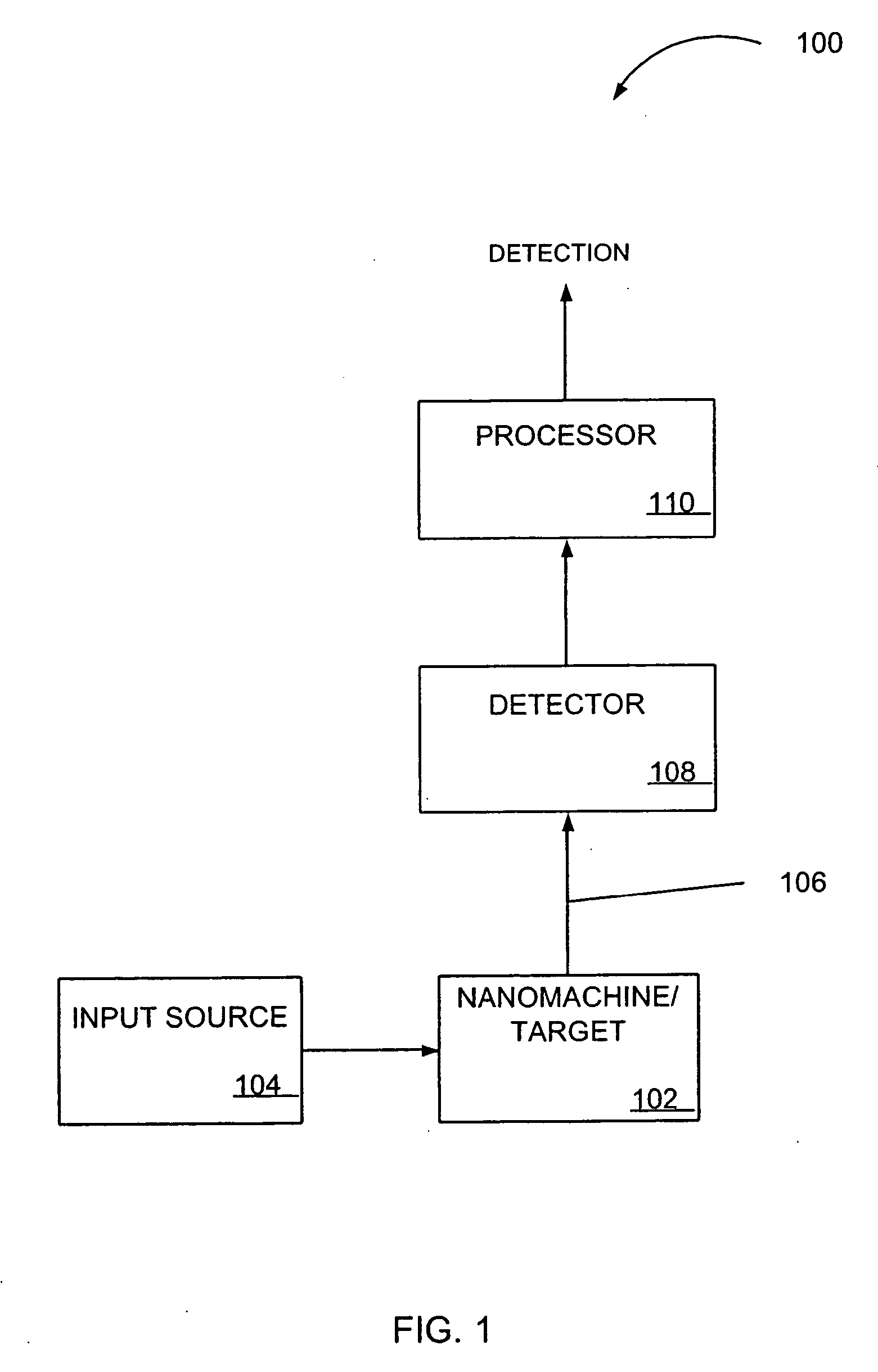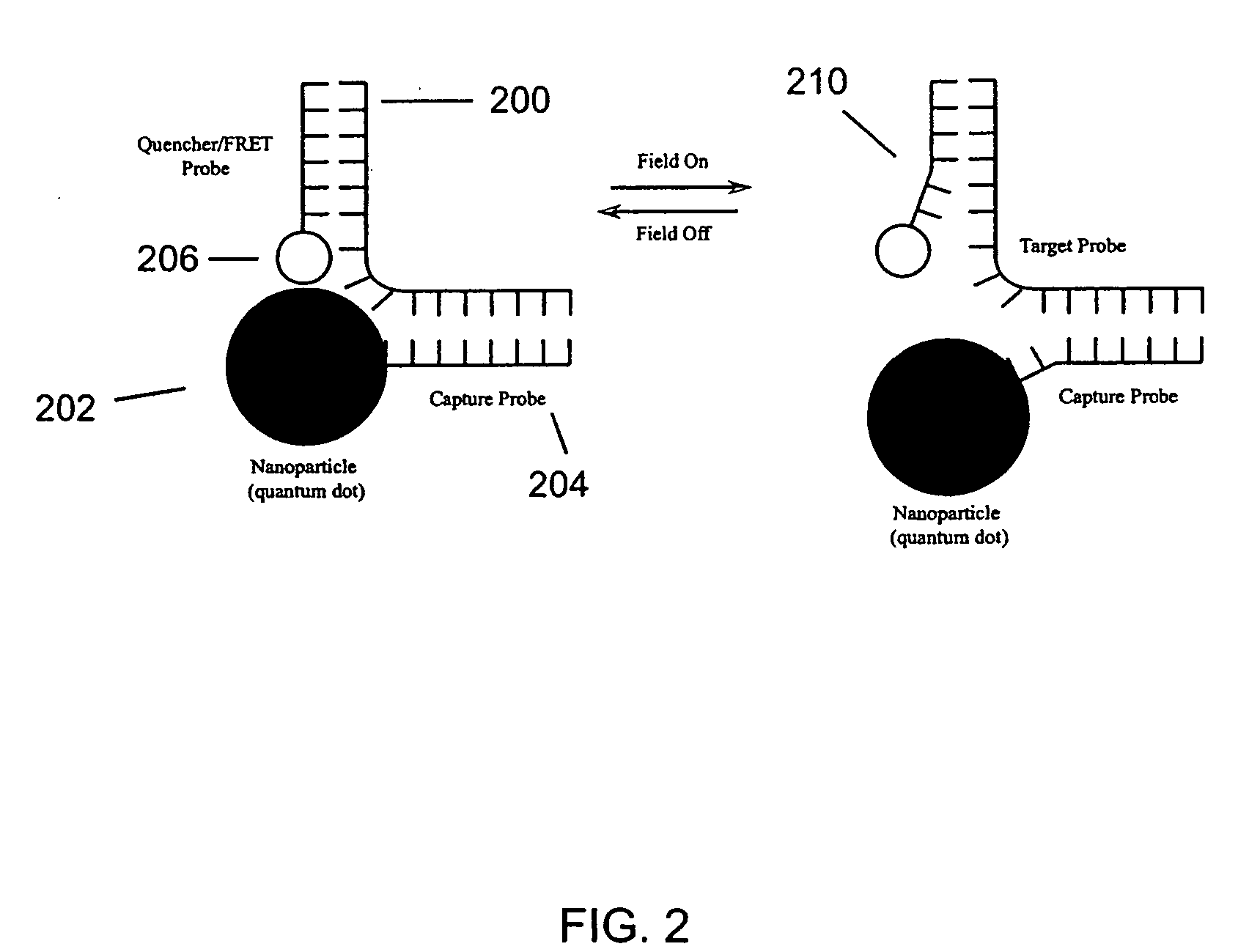Nanoscale transduction systems for detecting molecular interactions
a transduction system and molecular interaction technology, applied in nanoinformatics, nanomedicine, instruments, etc., can solve the problems of limited application of this stochastic detection theory in other fields, such as life sciences, subject to the fundamental limits of background noise, etc., and achieve the effect of single molecule detectability
- Summary
- Abstract
- Description
- Claims
- Application Information
AI Technical Summary
Benefits of technology
Problems solved by technology
Method used
Image
Examples
example 1
Production of an Oscillatory Nanoscale Signal
[0165] The ability to produce an oscillatory signal at the nanoscale has two basic components; turning the system off, and turning the system on. For fluorescence resonant energy transfer (FRET) pairs, this could be the transition from red to green emission, with the green emission being “on” as a result of the free energy introduction and the red emission being in the relaxed “off” state. In another embodiment, a fluorescent nanoparticle / quencher system in the “off” state would be dim due to the quenching activity when in close proximity, and bright when in the “on” state. Preferred embodiments of this invention would maximize the signal change between states. Preferred embodiments would also establish a differences in frequency spectrum (with respect to the kinetic relaxation of the system) between specific and nonspecifically bound molecules.
[0166] As shown in FIG. 21, the addition of a complementary, one base mismatch, and two base ...
example 2
Nanoparticle Detection of Nucleic Acids in Complex Samples
[0169] The identification of unamplified nucleic acid targets has been heretofore nearly impossible using existing assay methods. While it is possible to detect very low levels of fluorescence (single molecule fluorophores or individual fluorescent nano / microparticles) there are few if any assay techniques with the requisite speed, specificity, selectivity and sensitivity which allow low copy number DNA / RNA targets to be detected without prior amplification of the target DNA. Furthermore, most fluorescent systems (molecular beacon probes, FRET probes, etc.) are used to detect PCR amplified DNA targets. Thus, there exists a need for methods of detecting limited quantities of a target nucleic acid without the use of PCR prior to detection.
[0170] In one embodiment, methods for identifying a target nucleic acid molecule in a sample are provided. The methods include contacting the target nucleic acid molecule with a first nuclei...
PUM
| Property | Measurement | Unit |
|---|---|---|
| Time | aaaaa | aaaaa |
| Temperature | aaaaa | aaaaa |
| Force | aaaaa | aaaaa |
Abstract
Description
Claims
Application Information
 Login to View More
Login to View More - R&D
- Intellectual Property
- Life Sciences
- Materials
- Tech Scout
- Unparalleled Data Quality
- Higher Quality Content
- 60% Fewer Hallucinations
Browse by: Latest US Patents, China's latest patents, Technical Efficacy Thesaurus, Application Domain, Technology Topic, Popular Technical Reports.
© 2025 PatSnap. All rights reserved.Legal|Privacy policy|Modern Slavery Act Transparency Statement|Sitemap|About US| Contact US: help@patsnap.com



